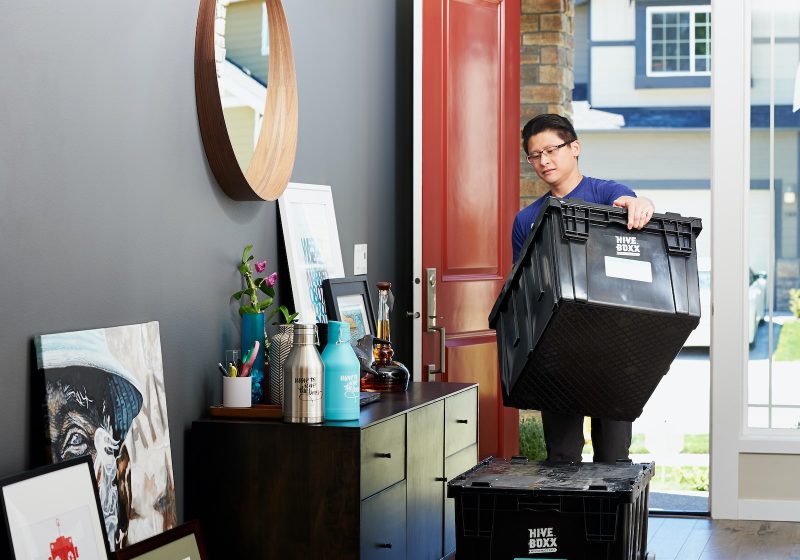It’s important to be able to see the reasons why tenants leave and how often they move. Losing tenants can impact your profit margin. These losses could result in a significant loss over time.
Tenant turnover refers to the rate that renters leave a rental apartment. Tenant turnover is a major expense for your rental business.
Insufficient rent income from vacancy
Marketing costs for listing your property and finding new tenants
Screening applicants requires background and credit checks
Cleaning costs for preparing your rental property for a new tenant
We’ll be discussing the factors that influence rental turnover rates such as economic trends and location. These tips can be used to convince your tenants to sign a lease extension instead of moving on.
This knowledge will help you understand the factors that influence your rental’s turnover rate. This knowledge will help attract tenants who want to live in your rental for the long term.
How often do you Canadian What happens when tenants move?
According to the Canadian Association of Movers, The average Canadian People will move five to six times over their lives. Both tenants and homeowners are likely to be included in this number. Canadian The data does not cover renters.
ResidentRated’s national research found that American tenants stay in their rental properties for an average of 27.5 months.
Imagine this figure closely matching the movements of Canadian tenants. The average Canadian A tenant will live in one rental property for a little over two years. This is a lot!
Naturally, turnover rates will vary from province-to-province. These numbers are taken from the 2021 Rental Market Report. Canadian Mortgage and Housing Corporation
You can view the various turnover rates here. Canadian Cities, the CMHC makes this data available.
How to calculate your average turnover cost and turnover rate
Divide the number of tenants who move out within 12 months by the number of tenants you have over that time period to calculate your tenant turnover rate.
Your turnover rate is 33% if there are two tenants that move out within 12 months.
The Calculating the average turnover costs of your rental company requires more work. The turnover cost calculator will help you quickly determine the average turnover costs for your rental business.
What Are these the most popular reasons Canadians choose to move?
According to data from Mi-Box (a mobile storage company with operations throughout North America), most Canadians move because of the following reasons.
How understanding tenant turnover can improve your bottom-line
Understanding the factors that affect tenant turnover rates is key to your success.
Your marketing efforts should be focused on attracting customers. Right tenant, not just any tenant
So you can predict the needs and goals for your tenants, you will know what amenities they are looking for in a rental.
Calculate the expected annual rental turnover cost, and then budget it into your projected profit.
Match your property type better (apartment, detached house, etc.). Tenants who are more inclined to stay for the long-term will be happier
Let’s take a closer look at these factors.
Economic conditions
The The state of the economy is a major factor in rentingers making a decision about whether or not to relocate.
Tenant turnover tends to rise during a recession. Renters who are financially insecure or have lost their jobs seek housing that is cheaper. Tenants are less likely to move to a new place when there is a lot of uncertainty, like the COVID-19 pandemic.
Let’s suppose that rent prices have risen rapidly since the recession. Renters are more likely stay where they are located, especially if they recently paid a good rental fee. As rent prices drop, renters are more likely to search for new rental properties.
Trends in the regional rental market
It may be advantageous to seek long-term tenancies depending on the location of your rental. These regional variations can be explained by consumer demand differences, government regulations and other factors.
In Saskatchewan and Alberta, for instance, long-term tenancies tend to be more popular. Short-term rentals can also be found in British Columbia, Ontario, and other provinces.
Both short-term and long-term rentals have their benefits and disadvantages.
Tenant demographics
Are you a particular type of tenant that you like? This is a crucial question to ask because tenants tend to move more frequently than others.
Tenants’ movement patterns are affected by their income, age, and family status.
Every tenant type has different needs. This is based on their individual life goals and journey. The length of their stay at a rental property will depend on this.
The highest turnover can be expected among students. The most stable tenants are typically those who have retired and tend to stay put for longer periods of time. The middle is made up of young professionals and their families.
Types of rentals
The The type of rental property you have will affect how often you need to press the button “reset button” With a new tenant.
Students love to live in starter apartments because they are affordable, easy to maintain, and offer basic amenities. This property type has lower turnover rates.
Because of their higher income, young professionals find apartments and condos in upscale areas appealing. Young professionals tend to rent properties for longer periods of time than students. However, they might be able to upgrade their property as their careers progress.
Because they have lots of space, multiple bedrooms, and bathrooms, detached homes and townhouses can be a good choice for couples with children. Families prefer stability, while students and young professionals have lower turnover rates.
Individuals in transition often use basement suites. This could be people in transition, such as recently separated persons or those going through bankruptcy. These individuals are looking to improve their financial and living conditions quickly. Higher turnover rates are possible.
There are ways to lower your tenant turnover rate
A decrease in tenant turnover can help you increase your bottom line. It is crucial to retain your tenant’s interest and keep the rental unit in good condition.
Make sure your rental meets tenant expectations and their needs
Renting a unit with all the amenities tenants desire will make their stay more enjoyable and convenient. Tenants will be less likely to leave. To learn more about your target audience, you can conduct research.
You can upgrade your rental property with periodic renovations
It might be worthwhile to do a large-scale remodel depending on how the rental is currently maintained. You can maintain the appeal of your rental property by updating it regularly. If they stay longer, you can justify higher rents.
Before you start, ask your tenants to share their thoughts and suggestions. Your tenants will feel valued and be able to adapt the improvements to meet their needs.
Find out what the market is charging
It is important to be aware of the average rent in your area. Rents that are higher than comparable rental rates can lead to tenants moving on.
Raise your rent price slowly
Tenants won’t be happy if the rent is not raised for a long period of time and then suddenly increase it. Rent should be increased slowly each year in order to give tenants the ability to budget.
Screen for long-term tenants
Examine the rental history and work history of tenants when screening them. This will help you determine how frequently they have moved between properties. Check their bank statements to confirm that they have enough income to pay rent. It is important that your tenants pay their rent on-time. Your landlord’s turnover can be increased by evictions.
Offer incentives
The Right incentives can be used to encourage tenants to prolong their leases when they are due for renewal. These are some ideas:
Respect others and be responsive
It is crucial to maintain long-term tenants by building positive relationships between landlord and tenant. It is easy to do, it’s just common sense.
Keep in touch with your tenant. Respond to their emails and calls promptly.
Our Final Thoughts
Renters often move every few years. Renters are known to move every few years because of changes in their lives such as a job, a raise at work, or a bigger nest.
Are your rental units primarily rented to short-term renters Do you rent rental units to short-term tenants? If so, your tenant turnover rate should not be a problem.
As long as you value stability and consistency, your goal is to retain tenants over the long-term. It is crucial to know the economic climate in your area and what type of rental properties are available. All of these factors can impact your turnover rate. It is possible to make a plan for reducing it by becoming familiar with these factors.
You can also offer incentives to your tenant to encourage them into renewing their lease.
SingleKey provides three services that will help you find and keep long-term tenants, and reduce the risk associated with renting.
Tenant Report This quick credit and background check will allow you to quickly locate high-quality tenants who are willing to stay for a while, and pay their rent on-time.
Rent CollectionThis online rent collection tool allows tenants to pay their rent online via pre-authorized debit. It eliminates the need to send cheques. It is also possible to set up automatic reminders for tenants.
Rent Guarantee – This program covers your rental income up to 12 months and up to $60,000 if your tenant defaults on rent payments. Additional coverage is available to cover property damage and legal costs.









